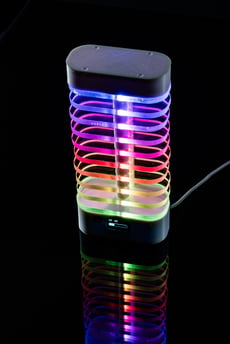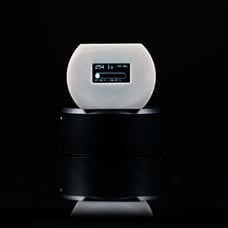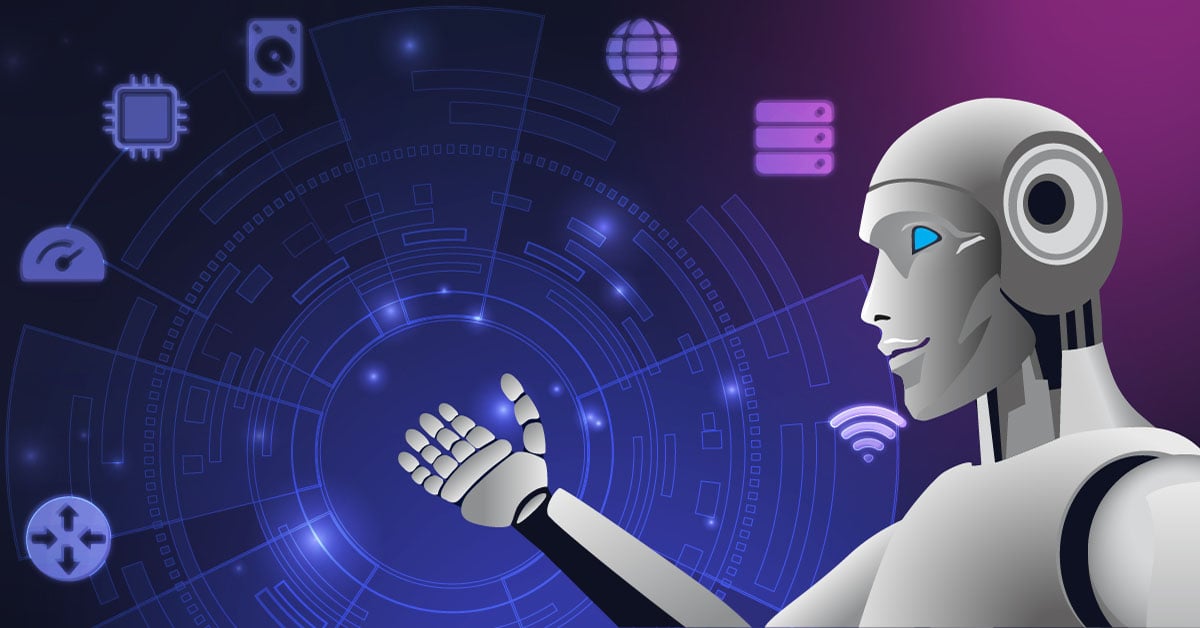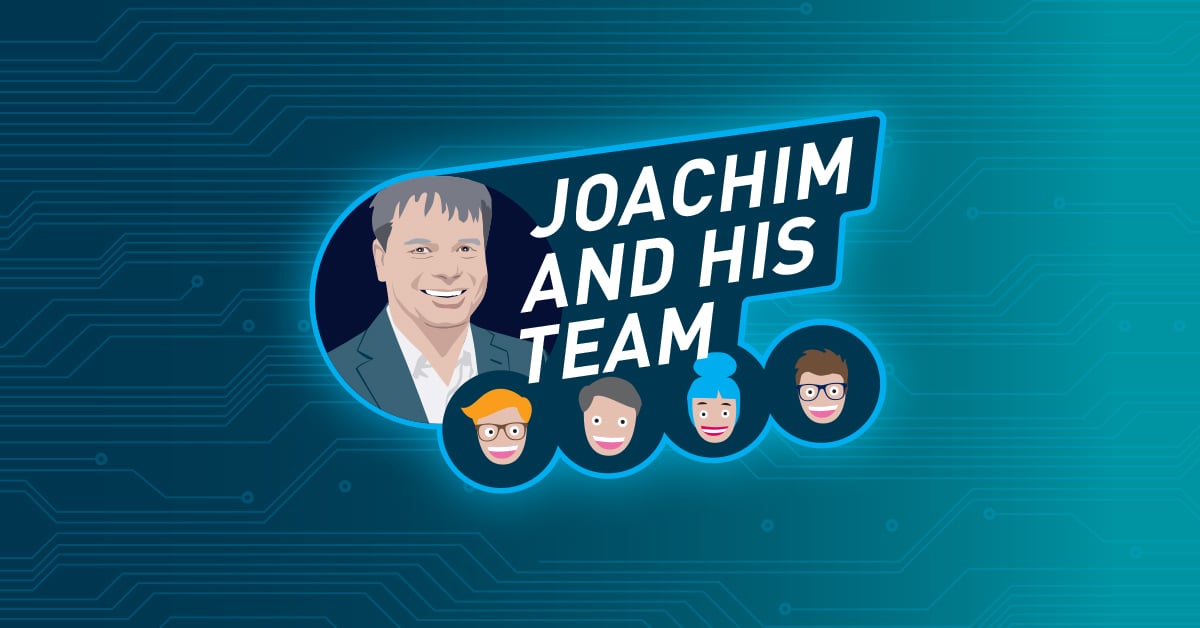We at Paessler are happy to help voluntary institutions and initiatives on a regular basis and it is a great pleasure to support the National Museum of Computing in the United Kingdom with a sponsorship of so-called “Relaxed Openings”. The aim of this sponsorship is to enable children with autistic disorders to visit the museum without stress and fear.
Because we would like to emphasize in this article that autism often goes hand-in-hand with extraordinary talents and interests, and we need to promote them.
A Journey through Time of Computer Development
The National Museum of Computing, located on Bletchley Park, is an independent charity housing the world's largest collection of functional historic computers, including the WITCH, the world's oldest working digital computer. The museum enables visitors to follow the development of computing from the pioneering efforts of the 1940s through the large systems and mainframes of the 1960s, to the rise of personal computing in the 1980s and beyond.
The best-known exhibit is from the early 1940s; the world's oldest computer, reconstructed, authentic and fully functional. “Colossus” was an early tubular computer that was built in England during World War II to decipher secret messages of the German military. The Germans communicated with each other using the so-called Lorenz Code (this was far superior to the Enigma cipher system). In 1943, mathematician Max Newmann and engineer Tommy Flowers designed and built a giant of 1500 tubes. The United States did not assemble their first computer, called "Eniac" (Electronic Numerical Integrator and Computer), until two years later. Colossus worked significantly faster than the so-called "Turing Bombs", which deciphered Enigma messages. However, Colossus was in many ways conceptually based on the preparatory ideas of Alan Turing, a mathematician and early computer scientist. In the innumerable rooms of the museum, all this and much more of the computer history of days gone by can be seen.
Autistic Children See the World Differently – and That’s Good!
The behavioral patterns of autistic children can be very diverse, which is why we should speak of a "disorder in the autistic spectrum" (ASD), that can also include milder forms of autism. ASD is a complex condition and it should not lead to a life apart from society. Many children and adults with ASD find it difficult to be in overcrowded rooms and are sensitive to noise, glare, unknown situations and stress in general. Therefore, visits to museums and other public places are sometimes only possible within so-called "Relaxed Openings". But that's enough of the disadvantages of ASD. After all, many autistic people insist that they do not feel disadvantaged and appreciate their admirable abilities. Many people from the autistic spectrum show an above-average intelligence, sometimes combined with considerable Savant skills; and it is not without reason that many autistic children are interested in IT and computers.
Of course, a serious diagnosis posthumously is impossible, but there is much evidence that Alan Turing also suffered from a form of autism, Asperger syndrome. Nevertheless, he made a massive contribution to the Allies winning WWII. As the irony of it all, Alan Turing might have found it difficult with his possible illness to examine reproductions of Colossus in a modern, large, noisy museum. And it is clear that autistic people are not "handicapped", but that their contribution is decisive for the advancement of society.
A Paessler Machine with Many Applications
 After consultation with the museum, we not only dedicate ourselves to the sponsoring of the Relaxed Openings, but also proactively to the topic of Environmental Monitoring. Our goal: With an easy-to-use device, the volume in a room (and other environmental factors) should be quickly readable, so that parents of autistic children know immediately whether certain rooms might be unsuitable for a current visit. The market didn't provide really useful equipment, so diligent Paessler employees, especially Christian Zeh, our man for great and useful inventions, made their own. At Paessler's “Innovation Friday” there was a project called “Laut-o-meter” in the past. Objective of the project: To measure volume and output it in decibels, which was fairly easy to do. But we wanted more - of course. Our conceptual approach was to present volume visually and at the same time in a child-friendly way. This is how the “volume device” was created, which still needs a great name; if you have an idea - please write us a comment! For a quick technical explanation, the following information: The sound pressure level is recorded by the microphone, converted into decibels and displayed on the mini display in real time. The level deviation is visualized in color via the LED segments. The data is transmitted to the MQTT Broker in real time via the MQTT protocol and then recorded by PRTG.
After consultation with the museum, we not only dedicate ourselves to the sponsoring of the Relaxed Openings, but also proactively to the topic of Environmental Monitoring. Our goal: With an easy-to-use device, the volume in a room (and other environmental factors) should be quickly readable, so that parents of autistic children know immediately whether certain rooms might be unsuitable for a current visit. The market didn't provide really useful equipment, so diligent Paessler employees, especially Christian Zeh, our man for great and useful inventions, made their own. At Paessler's “Innovation Friday” there was a project called “Laut-o-meter” in the past. Objective of the project: To measure volume and output it in decibels, which was fairly easy to do. But we wanted more - of course. Our conceptual approach was to present volume visually and at the same time in a child-friendly way. This is how the “volume device” was created, which still needs a great name; if you have an idea - please write us a comment! For a quick technical explanation, the following information: The sound pressure level is recorded by the microphone, converted into decibels and displayed on the mini display in real time. The level deviation is visualized in color via the LED segments. The data is transmitted to the MQTT Broker in real time via the MQTT protocol and then recorded by PRTG.
 After showing the museum what PRTG could do, they came up with a list of environmental factors they could monitor. Colossus, the oldest computer in the world, is pretty picky. If it's too warm, he needs to be shut down. Some of the other machines, on the other hand, don't like it too cold and should be warmed up. There're a lot of picky pieces of tech in this computer museum, and all of these "things" can be monitored by software. So this again has brought us to the fascinating world of IoT. And of course we will inform you about how it all worked and what experiences we have gained!
After showing the museum what PRTG could do, they came up with a list of environmental factors they could monitor. Colossus, the oldest computer in the world, is pretty picky. If it's too warm, he needs to be shut down. Some of the other machines, on the other hand, don't like it too cold and should be warmed up. There're a lot of picky pieces of tech in this computer museum, and all of these "things" can be monitored by software. So this again has brought us to the fascinating world of IoT. And of course we will inform you about how it all worked and what experiences we have gained!
More information
Are you looking for news and professional guidance for you and your child on the subject of autism? Then I can recommend the Autism Parenting Magazine, for example their very recent guide
👉 "What Are the Signs of Autism in Girls - Is Asperger's in Women Overlooked?"
 Published by
Published by .png)











